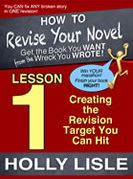Last week in reading posts by my ROW80 buddies, I noticed that many mentioned having goals for revisions. Some asked for suggestions.
For those writers, maybe I can help. For readers, here’s a glimpse of the nitty-gritty, not-so-pretty side of writing a novel and making it something others might want to read – maybe even pay for!
I can write a first draft of a novel in 3 months, give or take, depending on length. That’s on top of working a full-time, 40 hours/week day job, not ignoring my family, helping with my husband’s businesses, and other responsibilities. I’m not saying this to brag – it’s not that big a deal – but to point out that the first draft – getting the words down – isn’t the hard part of writing a novel, IMO. At least, it’s not hard if I’ve done a decent amount of planning ahead of time (aka plotting or outlining).

My first drafts have plot holes big enough to fly one of these through
The hard part comes after the first draft is written: revision. Because despite the heavy planning I do beforehand, there are always details that get left out, cardboard characters doing stupid things that don’t make sense, and plot holes big enough to fly a C-17 through. All in a world that’s barely seen, much less heard, felt, smelled or tasted. And that’s not even getting into the little nitpicky things like dialogue that doesn’t sound like anything a normal human being would ever say, people we can’t visualize, much less empathize with because they’re so thinly described, all wrapped up in a nice big package of WHO CARES because I left out the emotions.
It’s a daunting task, especially with my doorstopper-sized, >100,000-word, Saturn Society novels. How to handle it without getting overwhelmed?
For starters, I fortunately figured out several things fairly early on:
- I need to write the full first draft before revising. Some authors revise and polish as they work; if I did this, I’d never get anything done.
- Revising and polishing are two different things, and it doesn’t make much sense to polish when big-picture stuff is just going to change again.
- If I think of a major change while I’m writing the first draft, I note it in a separate Word document, then continue writing as if the change was already made. This is particularly useful when a change occurs to me while writing Chapter 14, but requires changes in Chapter 3, 6, and 7 in order to work and make sense.
- I read through the whole novel, then make big changes, then change the little, cosmetic things I consider “polishing.”
The above was all fine and dandy, and it got me through five novels, but I still always felt they fell short, that I was missing things. Between novels 4 and 5, I discovered Holly Lisle’s website and craft books, and bought Create a Character Clinic, which is one of the best prewriting/planning tools I’d tried to date, along with her Notecard Plotting article. I used her One-pass Revision method on my book #5, which helped. Yet I was still missing something.
 Holly also had a long-term, online workshop that sounded cool, but her second one of these – How to Revise Your Novel – that caught my eye. It’s subtitled “How to Get the Book You Want from the Book You Have.” I signed up as a charter member.
Holly also had a long-term, online workshop that sounded cool, but her second one of these – How to Revise Your Novel – that caught my eye. It’s subtitled “How to Get the Book You Want from the Book You Have.” I signed up as a charter member.
It goes over a lot of the concepts taught in the articles mentioned above, but in MUCH greater depth – and this was just what I needed. It also broke down all the different things to look for – overall, plot, theme, character, setting/worldbuilding, and dealt with each separately so we could learn.
It took me nine months to complete this 26-lesson course. But when I was finished, I had a book that I was confident had sympathetic characters, and interesting and engaging story, a decently fleshed-out setting and world – and best of all, no more plot holes. This revision process was brutal. And it was absolutely what took my writing to the next level.

Time's Fugitive had plot holes big enough to fly one of THESE through
One of the course objectives is to eventually compress the process down so that it’s truly a one-pass revision. I’m not there yet. Time’s Enemy wasn’t even a very wrecked book, and it took almost 5 months to revise. Granted, some of this time I goofed off and wasn’t very disciplined about just getting the work done. But still… Time’s Fugitive was a pretty wrecked book, and it took six months to revise, with very little goofing off (thanks in part to ROW80).
I have no connection to Holly Lisle, other than that I’ve taken her courses and bought many of her craft books. I haven’t even read any of her fiction, other than a few snippets on her website or in her articles, a lack I intend to correct, as she writes the kind of stories I enjoy. But her workshops – and HTRYN specifically – are hands down, the best I’ve ever taken. The HTRYN workshop is not cheap (she’s getting ready to phase it out and replace it with a series of ebooks), but it’s hands-down the best $200 or so I’ve spent for my writing career.
So if you’re looking for a way to tackle an onerous revision, check out How to Revise Your Novel. She guarantees the workshop – if you don’t like it, you can stop paying for it – and when she goes to ebook, duh, you don’t need to buy the whole series if you don’t want. But I’d be very surprised if you start and don’t want to finish.
So for my writer friends, what’s your revision process like? Have you tried HTRYN, or if not, does it sound like something you might find beneficial? Readers – have you ever read a novel with one of those C-17-sized plot holes? Did you work past it, or did you want to chuck the book across the room (or permanently delete from your e-reader)? Got any horror stories (that weren’t supposed to be) to share?
Aircraft photos via the Official U.S. Air Force website


